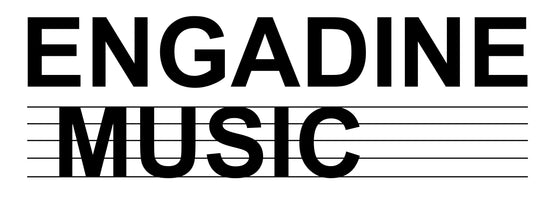Joyau is a French word translating to "jewel," or in the case of music, a "showpiece." Therefore, the work was composed as a “showpiece” for the entire percussion section consisting of timpani and an array of percussion divided between the remaining five percussionists. This is a follow-up to Gillingham's immensely popular work Concertino for Four Percussion.
Program Notes
Joyau was commissioned by 22 schools and universities headed by Warren Township High School Bands, Gurnee, Illinois, Kurt Gros, Director. The impetus and inspiration for the work came from an earlier composed work, Concertino for Four Percussion and Wind Ensemble. This work, however, features a percussion sextet (timpani and five percussion).
Joyau is a French word translating to “jewel,” or in the case of music, a “showpiece.” Therefore, the work was composed as a “showpiece” for the entire percussion section consisting of timpani and an array of percussion instruments. The work is based on two contrasting themes, one spirited and one lyrical as well as a third intensely dramatic theme based on theme 2.
The structure of the work is based on the alternation of the thematic material with two development sections and an extended coda. An introduction makes use of the melodic material of Theme 1 as well as the quartal harmony generated by the melodic line. Theme 2 is heard in its entirety for the first time after which the xylophone and marimba begin playing motivic material of Theme 1 which gathers texture and leads into a full presentation of Theme 1 in C major. Woodwinds accompany the xylophone and marimba as theme 1 unfolds with interjections by the brass. The theme is repeated in D major followed by a transition, based on Theme 1 motivic material, and modulating to E-flat major.
Marimba and vibraphone now play an obligato based on the quartal melodic material of Theme 1, and Theme 2 is played by flute, oboe, clarinet and alto sax with the remaining ensemble supporting the harmony. A modulation and crescendo lead to the first appearance of Theme 2a in B-flat major by the full ensemble alternating with the solo keyboard percussion playing passages based on the Theme 1. This is then followed by the trumpets continuing an ostinato derived from Theme 1 with the low brass interjecting motives from Theme 2a. A development section follows beginning with bell chords based on the quartal harmony of Theme 1 with punctuation by two sets of small bass drums. The ribbon crasher sets a rhythmic pace for the fugal section to follow.
The five-part fugal exposition begins with bass instruments playing the subject outlining quartal harmony. Trombones and tenor sax state an answer followed by horns and alto sax on the subject and then trumpets with the answer. A final statement of the subject is stated by the high woodwinds and swells to two dramatic articulations of a C major chord which aptly leads to the return of Theme 1. A transition leads to the final presentation of Theme 2 in D-flat major with solo keyboard percussion and woodwinds interjecting quartal passages derived from Theme 1. This leads to a second development section featuring the timpani with interjections of Theme 2a in the marimba, vibraphone and bells. An ensuing ostinato by vibraphone, bells, piano and trumpets provide a backdrop for more interjections of Theme 2a in the horns, saxes and low brass followed by sweeping scalar passages in the high woodwinds, xylophone and marimba. The section grows in texture and volume and leads to a coda that celebrates all of the thematic material and brings the work to a dramatic and rousing close.

